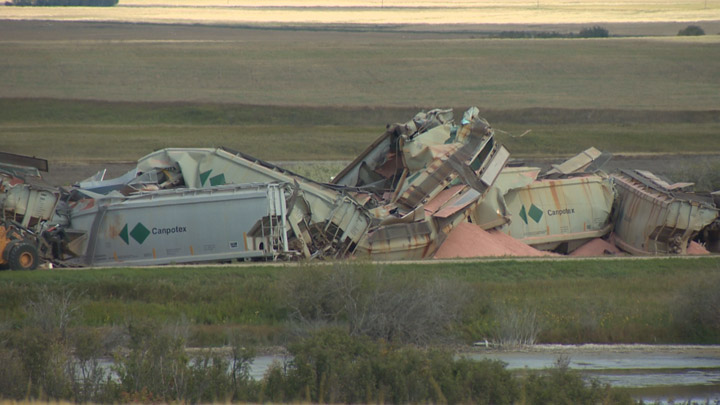An investigation has concluded that cracks in a rail joint ultimately led to the derailment of a freight train carrying potash southeast of Saskatoon last fall.

A Transportation Safety Board report says the cracks made the rail joint weak and it ruptured under the weight of the Canadian Pacific Railway (TSX:CP) train.
Some 37 cars derailed just west of the rural municipality of Blucher on Sept. 15.

Get breaking National news
The report says many of the derailed cars spilled potash, but no dangerous goods were involved and no one was hurt.
About 760 metres of track was damaged or destroyed.
The TSB says all required track inspections had been performed, including three in the previous year that showed some minor defects not needing immediate attention under CP maintenance standards.
The train had just passed through a switch at Blucher when the crew felt the locomotive dip and heard a banging sound.
An engineer applied the brakes to slow the train and four seconds later an automatic emergency brake was activated.
Half a rail joint was recovered during cleanup and had “rail-end batter on the east-end rail head and fatigue cracking in the joint bars.”
Potash is used as an agricultural fertilizer.

Comments